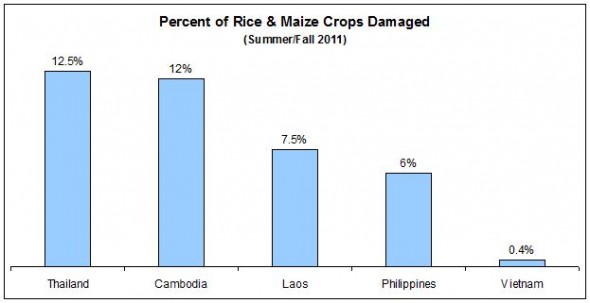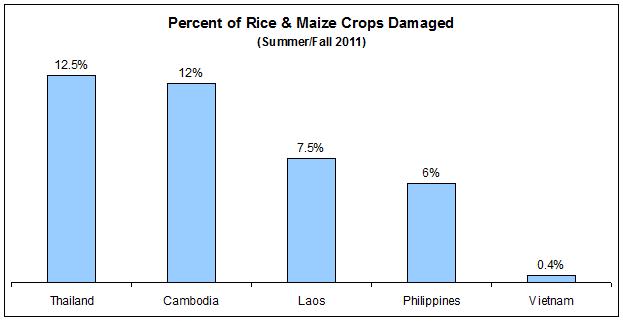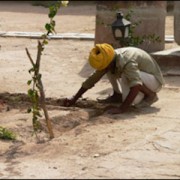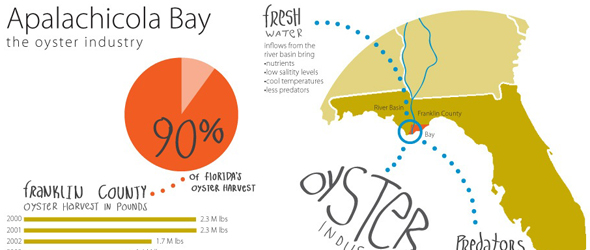UN Report: Floods Threaten Southeast Asia Food Crisis, Disrupt Thai Car Industry
With hundreds of deaths, thousands of damaged hectares, and millions of refugees, this year’s fall flooding has equated to a devastating wet season.

The intense monsoon rains, typhoons, and tropical storms in Southeast Asia over the last two months may cause “serious food shortages” in the region, the U.N. Food & Agriculture Organization (FAO) said in a report last week.
The recent floods have killed hundreds of people and displaced millions of others, as well as battered housing, infrastructure, and agriculture in several countries. Although flood waters have begun receding in some areas, the difficulties in delivering food assistance have raised concerns about food shortages in the affected communities. Additionally, as shown in the graphic above, domestic crops have been damaged in several countries.
Thailand, in particular, is experiencing the worst flooding in 50 years, with two-thirds of the country inundated and 356 recorded deaths. Along with the heavy rains, water flowing from the North has swollen rivers and canals, damaged infrastructure, disrupted business, and caused food and water shortages in a number of Bangkok’s districts. This is bad news for the Thai capital, as it makes up more than 40 percent of the nation’s economy, Bloomberg reported.
The agricultural and manufacturing industries are struggling as well. According to Reuters, 6.4 million metric tons (7 million tons) of paddy may be lost from Thailand’s main 2011-2012 rice crop, which could slash total production to only 16.3 million metric tons (18 million tons). Meanwhile, Thailand’s car-manufacturing industry — which is the biggest in Southeast Asia — is losing 6,000 cars per day of output. The Thai government plans to set aside $US 3.2 billion to revive the industrial sector, with help from international financial institutions.
| Philippines: has experienced heavy typhoons and floods in 35 provinces during September and October, with severe consequences for the paddy production. Preliminary reports indicate substantial damage to 16 percent of national production. | Vietnam: has had 46 deaths in the central regions since July and has had nearly 29,000 hectares (71,000 acres) of standing paddy crop damaged by the monsoon season, worsened by mid-October rains. |
| Cambodia: has had severe floods in the southwestern and northern regions, where about 1.2 million people have been affected, as the Mekong and Tonle Sap rivers have burst out of their banks. | Laos: has been battered by typhoons and floods, with nearly 430,000 people affected and at least 64,000 hectares (158,000 acres) of rice fields damaged since June. |
Sources: Bloomberg, FAO, Reuters
, a Bulgaria native, is a Chicago-based reporter for Circle of Blue. She co-writes The Stream, a daily digest of international water news trends.
Interests: Europe, China, Environmental Policy, International Security.






Trackbacks & Pingbacks
[…] the year 2050. Increased natural disasters could affect supply chains on a a national level, like the floods that paralyzed Thailand in 2011 and 2012. Rice could become less nutritious, meat quality would get […]
Leave a Reply
Want to join the discussion?Feel free to contribute!